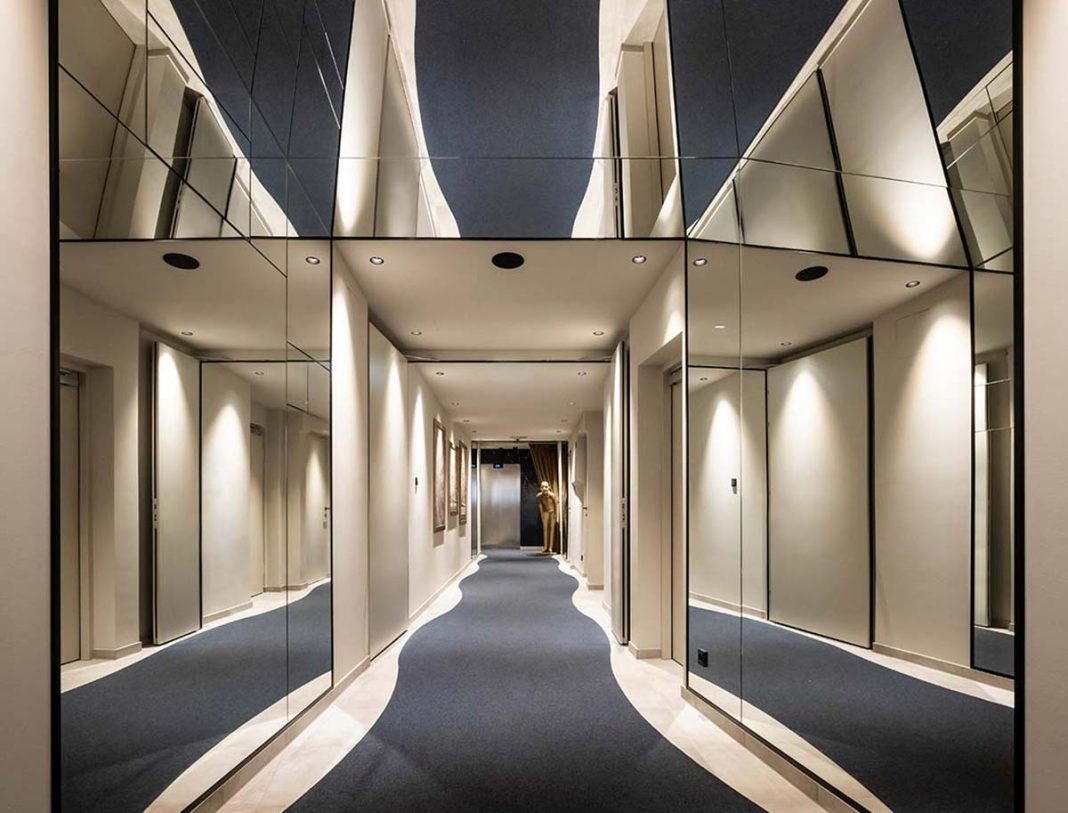DATA SHEET
Client: Altstadthotel Weisses Kreuz
Architecture & Interior design: Noa* network of architecture
Furnishings: custom made by Norer Tischlerei
Lighting: Gubi; Custom lamps
Bathrooms: GSI, Paffoni
Upholstery & Textiles: Raumausstattung Wieland
Wall coverings: Inkiostro Bianco
Painting & coatings: Farben Holzbaur
Flooring: HTW-Design Carpet
Tiling: Equipe
Photo credits: Alex Filz
The Noa* network of architecture has rewritten the history of the centuries-old Altstadthotel Weisses Kreuz hotel in the heart of Innsbruck, subverting the bounds of time and design. Dating back to around 1460, the Weisses Kreuz was formed of construction elements from different eras, set with complete continuity in the urban landscape of the Herzog-Friedrich-Straße, the city’s historic neighborhood.
Stefan Rier and Lukas Rungger (co-founders of the Noa* studio) took up the redesign and expansion of the hotel, taking a very contemporary approach to this invaluable starting material, drawing on a multiplicity of cultural references, joined harmoniously despite their distance in time. While crossing the Weisses Kreuz threshold takes us on a journey through history, it also demands we free ourselves from preconceptions and give ourselves over to Noa*’s visionary design.
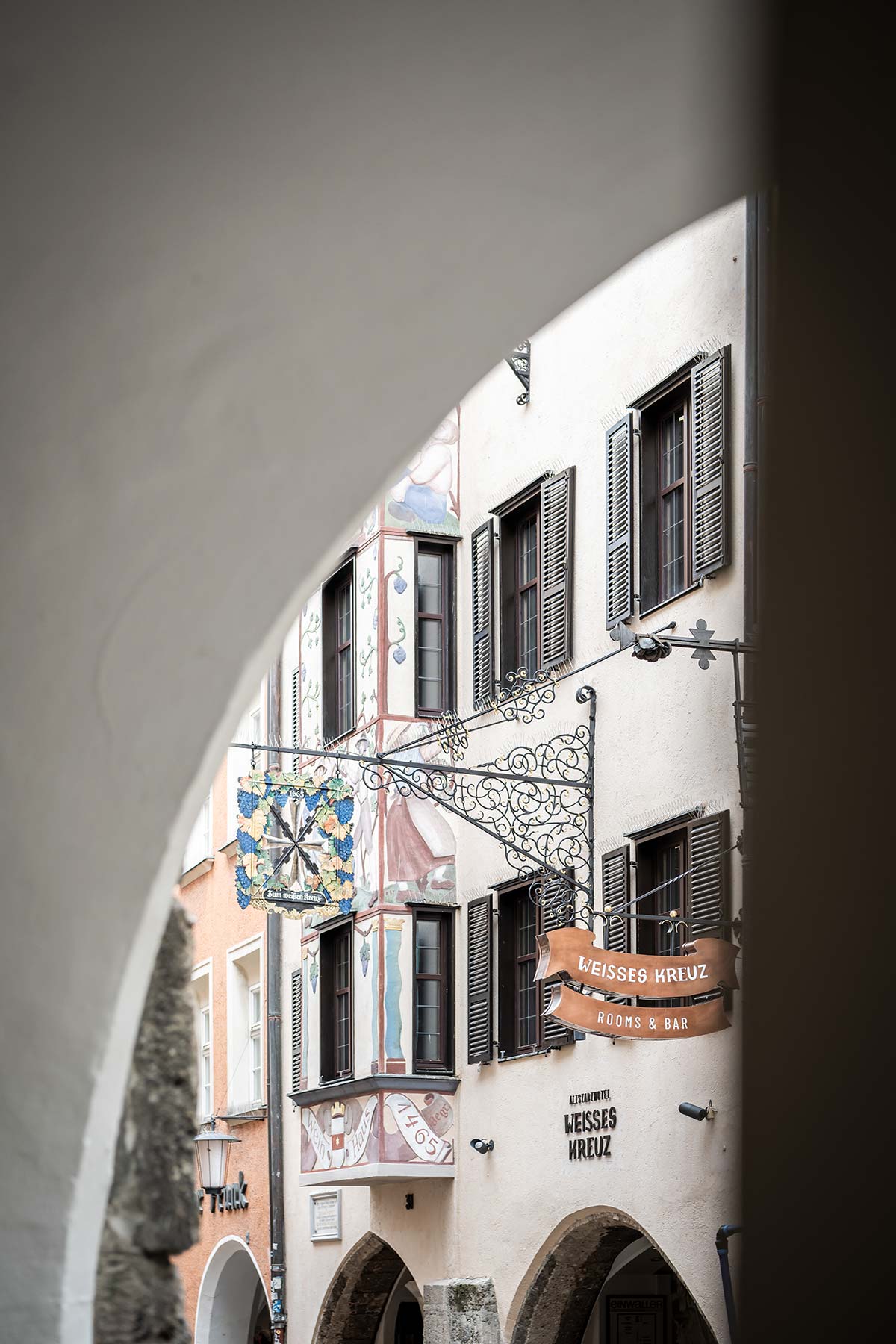
Right from the entrance, the sense of strangeness begins. The building is narrow, stretching lengthwise towards the interior and it opens with a long corridor, interrupted by two “mirror partitions,” which lead to the elevator. The reflective surfaces on the walls and the ceiling dissolve the boundaries of the room and architecture becomes immaterial, while guests encounter themselves. Here is where the new time dimension begins. The elevator goes from the ground floor directly to the sixth — a new penthouse added during the redesign, the result of work careful to protect the building’s heritage — and opens onto the reception.
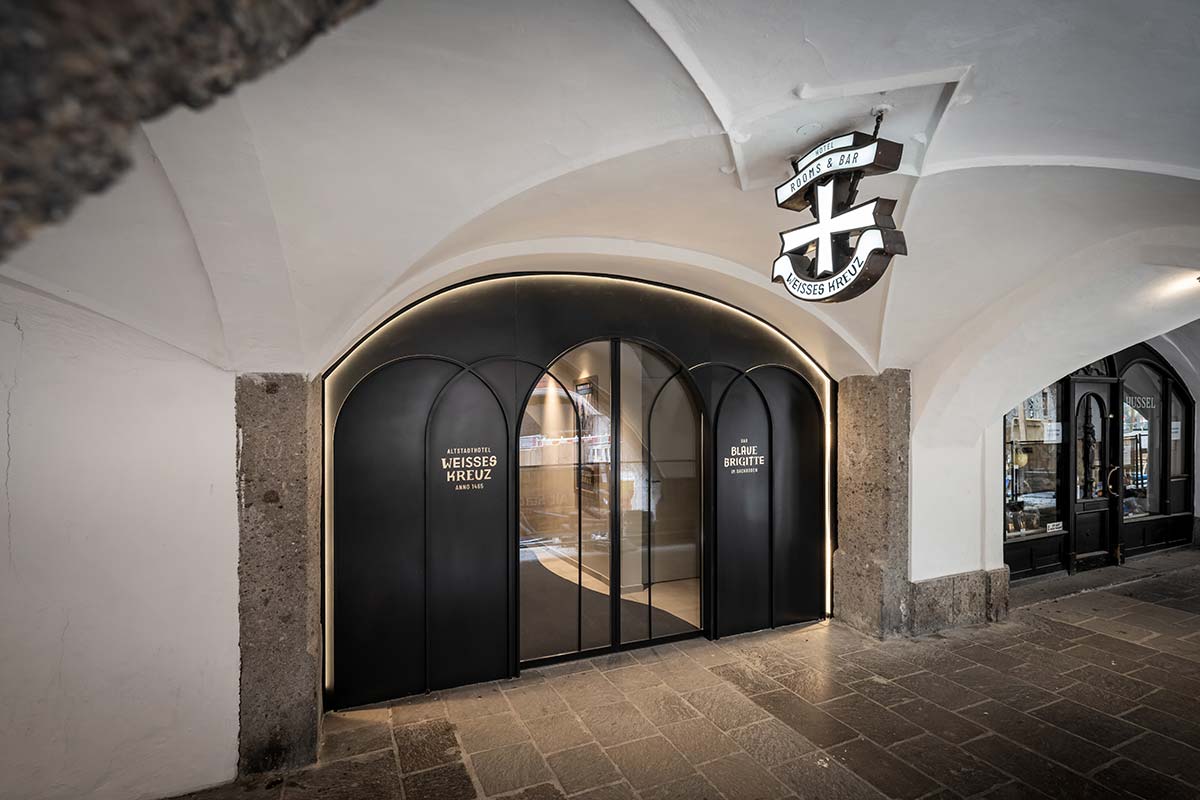
“It was immediately clear from studying the state of affairs that the distribution of the spaces would have to be subverted,” says Stefan Rier. “The lobby had been on the second floor, separated from the breakfast area. This made the ground floor entrance rather uninviting. So we opted for the radical approach of a walkway from the entrance to the sixth floor, and as you go up the sense of anticipation mounts.”
The lobby is pure magic, unexpected in its location and even more so in its layout. Its identifying feature is a 13-meter long table — made to measure in brass with baroque ornaments — which traces a path lengthwise through the room while serving the functions of receiving guests, serving as a breakfast buffet, bar and delightful meeting place in the evenings, open to the public.
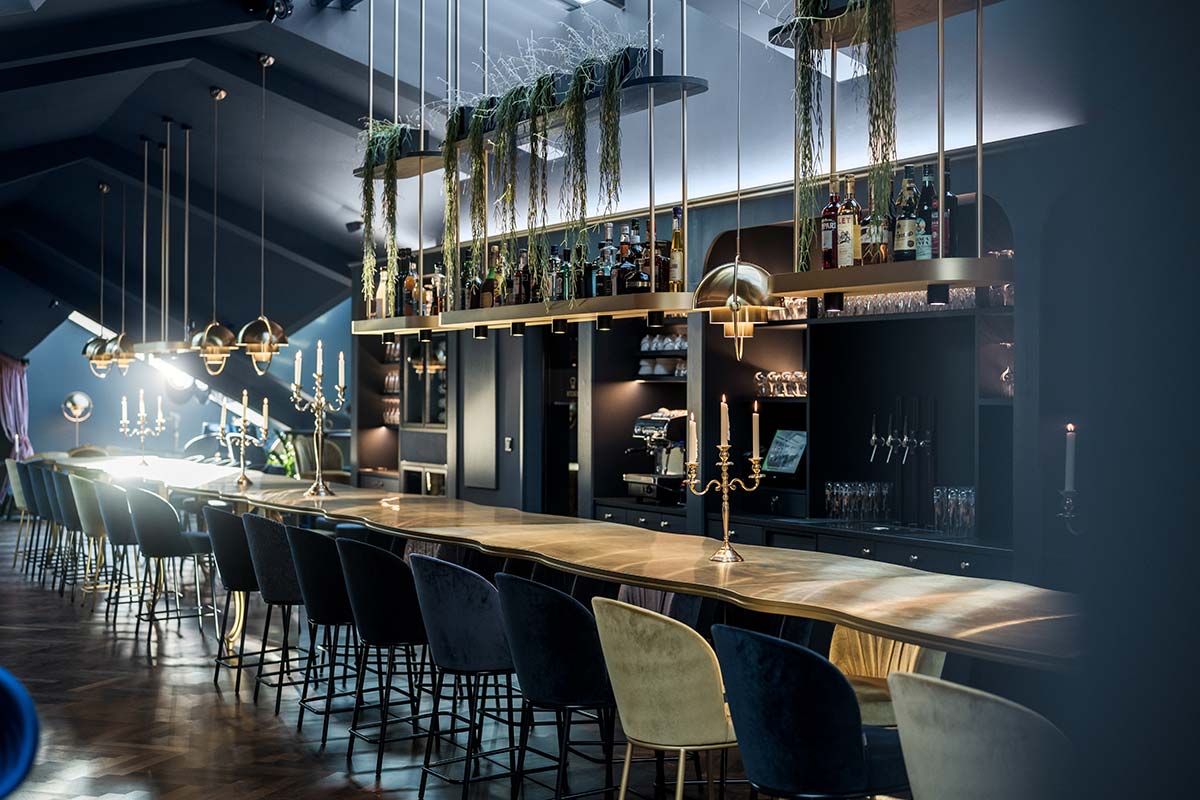
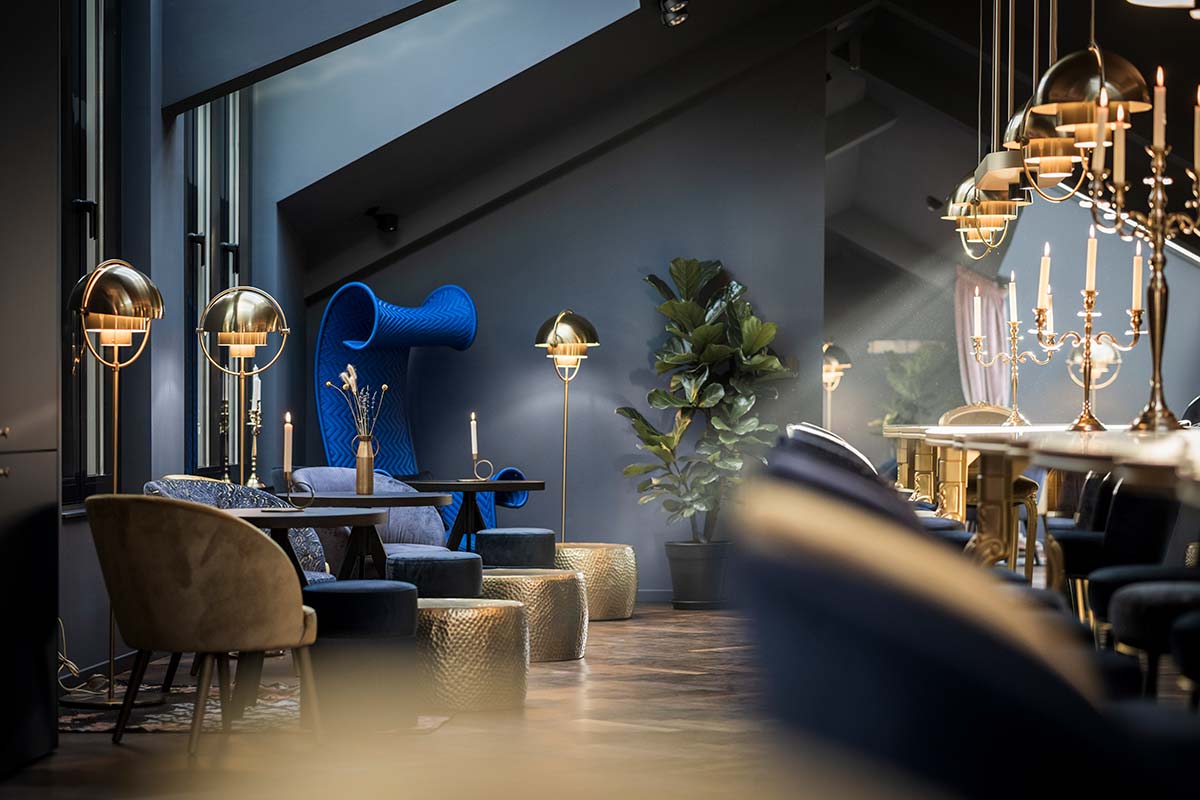
The warm dark blue hues intensify the atmosphere’s evocative power and combine with the smoked oak of the floor in contrast to the royal brass of the finishes and furnishings; this color also gave the name of the “Blaue Brigitte” venue (named in honor of the property’s owner as well).
“The decision to invert the routes of the hotel turned out to be a success on both a conceptual and compositional level. On the one hand, it creates a sense of surprise; there is no better start to a journey through time than to break with the life flowing in the streets of Innsbruck,” continues the architect. “On the other, it optimized the layout of the spaces in a building with considerable historical constraints; having the lobby and the bar on the sixth floor, and addition to the original volume, made for a well-lit, functional space with an urban character.”
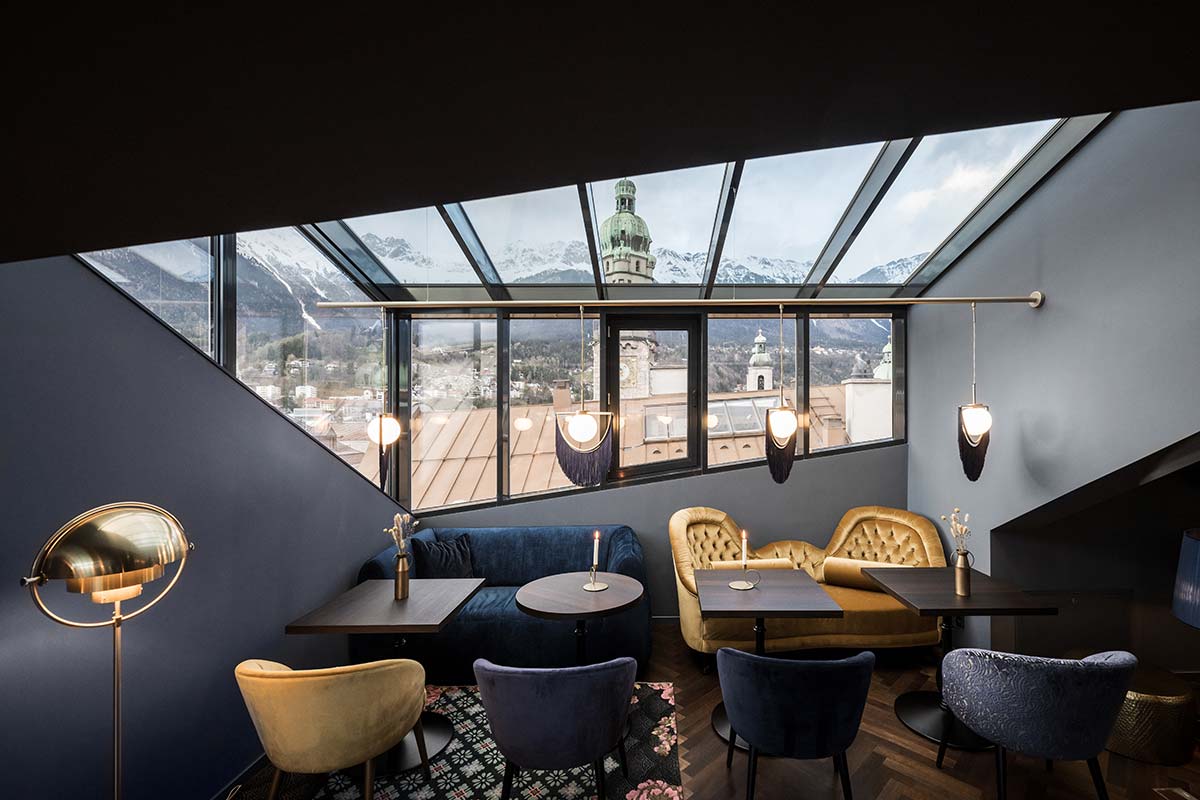
The penthouse’s bay windows and glass niches that light up comfortable rest spaces to enjoy a view of the city make it a triumph of timelessness; pieces from different style periods create a varied mix but carefully coordinated by harmonious colors, carrying guests away from the present day. Here the “Chic Shock Baroque” design theme is most clearly expressed. “That motto is a wink to the Baroque, which inspired us for the interior design, in the sense of being excessive, opulent, eclectic. But everything is studied in its color down to the detail, no room is made for minimalism.” This goes for the rooms too (which can be accessed from the lower floors) and are given a specific identity by their color.
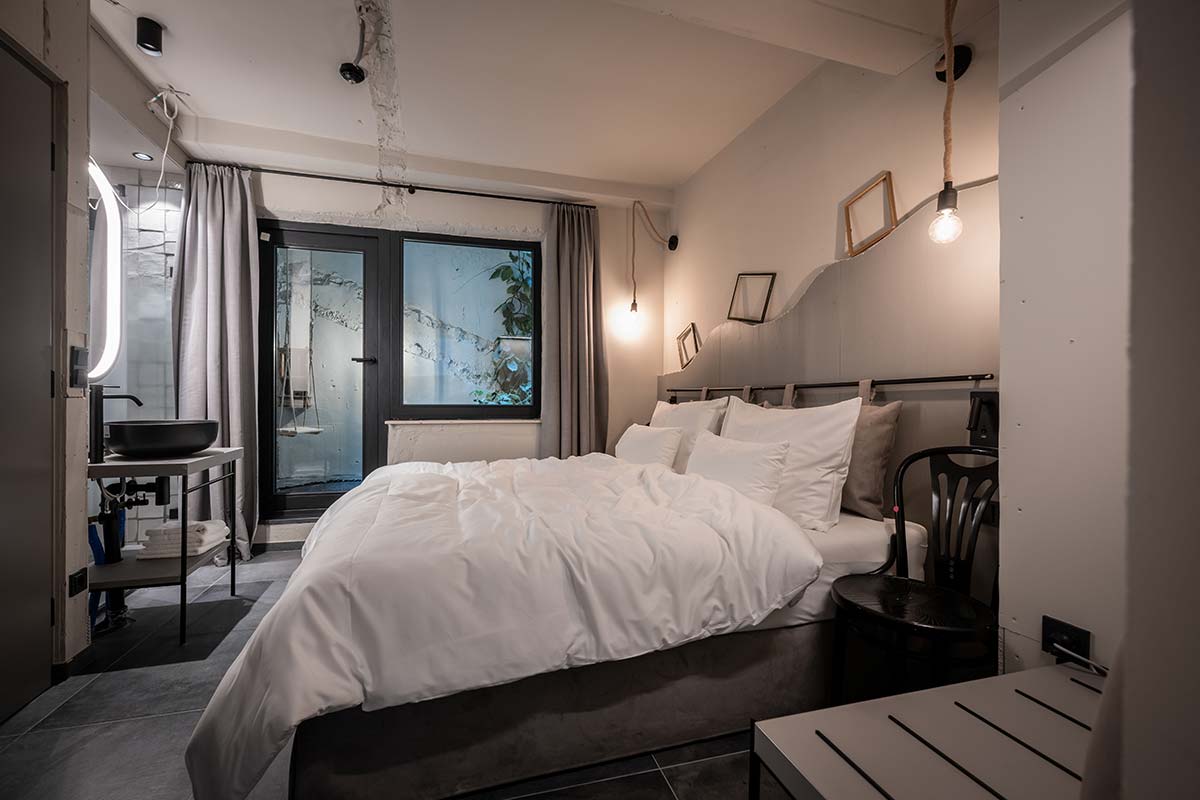
The rooms have Gothic ceilings, arches and rooms of different heights, another challenge for Noa*, given the building’s unusual configuration. “It was a tailoring job, in which we explored, room by room, the possibilities for redesigning and redistributing spaces without harming the structure.”
Some rooms overlook the street, others onto the internal courtyard (with patios or balconies); in the central part of the building without windows, the rooms are lit by a shaft of light between the first and sixth floors that lets natural light filter into the rooms and have a small private terrace with plant life. These are the green rooms, like the “Superpatio” furnished in jungle style.
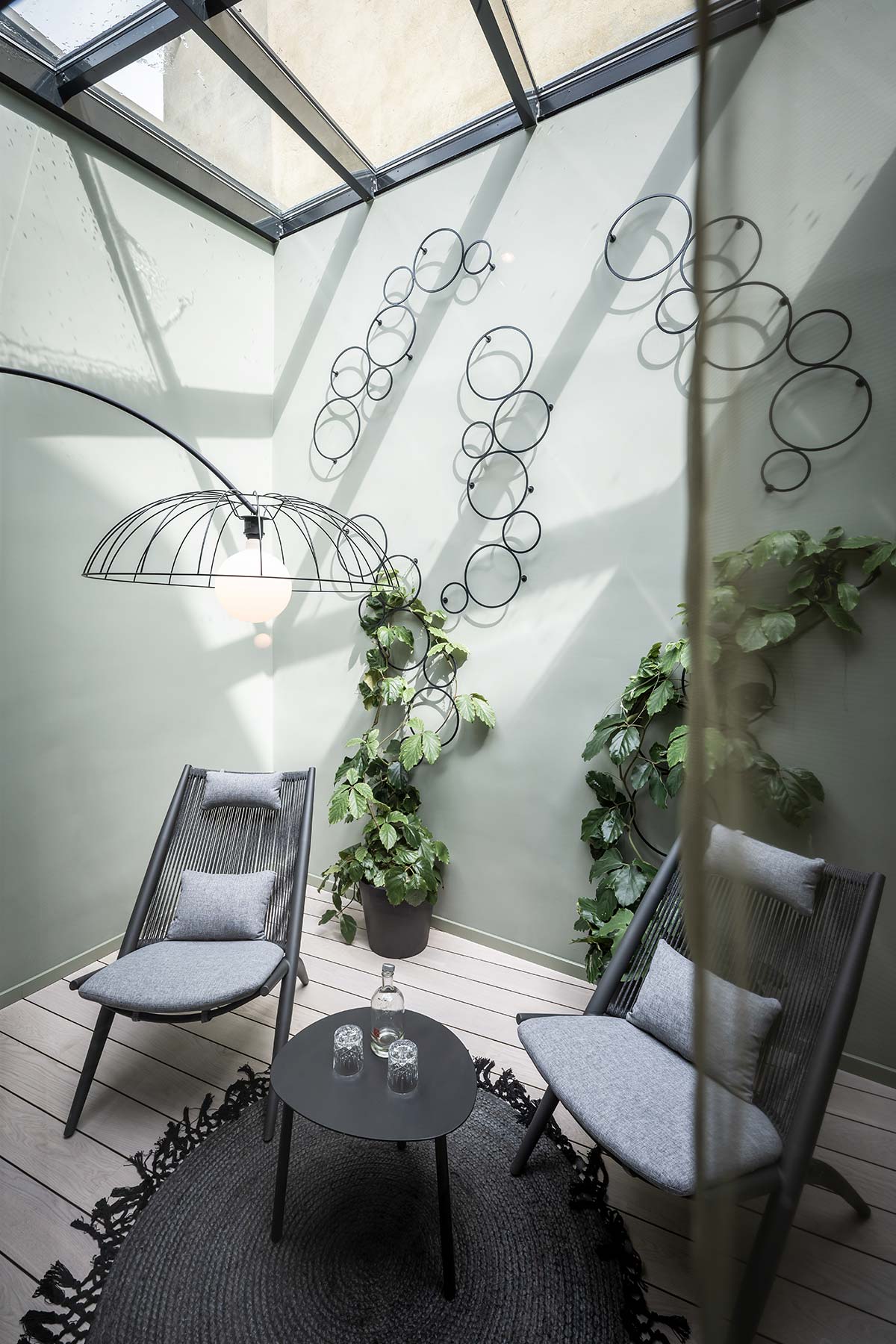
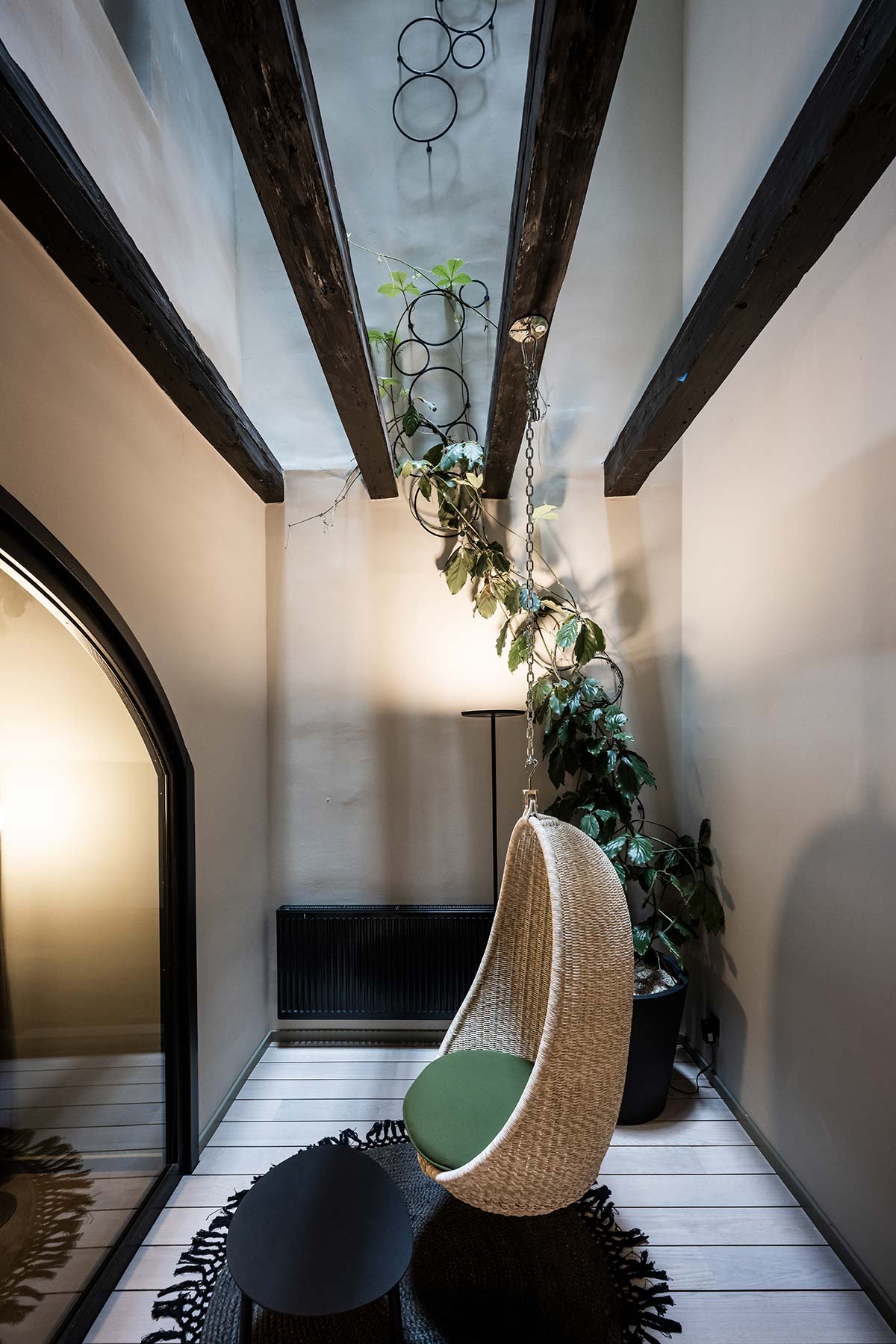

There are red ones (including the “Mozart Suite” on the second floor, in honor of the composer who stayed here), which are a little more spacious than the light blue ones; and dark blue rooms with balconies, and gray ones, which are furnished as double rooms. The third floor holds the smallest room of all, christened “the broom closet,” left deliberately unfinished, the only corner of the hotel “without style.”
The fourth floor with another ten rooms extends to an adjacent building, known as “Frank House,” which includes the “Golden Roof” with opulent golden furnishings: a tribute to Innsbruck’s famed Golden Roof, clearly visible from the bay window. Everything in the decor and furnishings, from the carpet to the tiles, the painting to the curtains, and the furniture, are in the same hues. Baroque style lives in the details here: a leg of the sink or a chest of drawers, accessories, photographs on the walls.
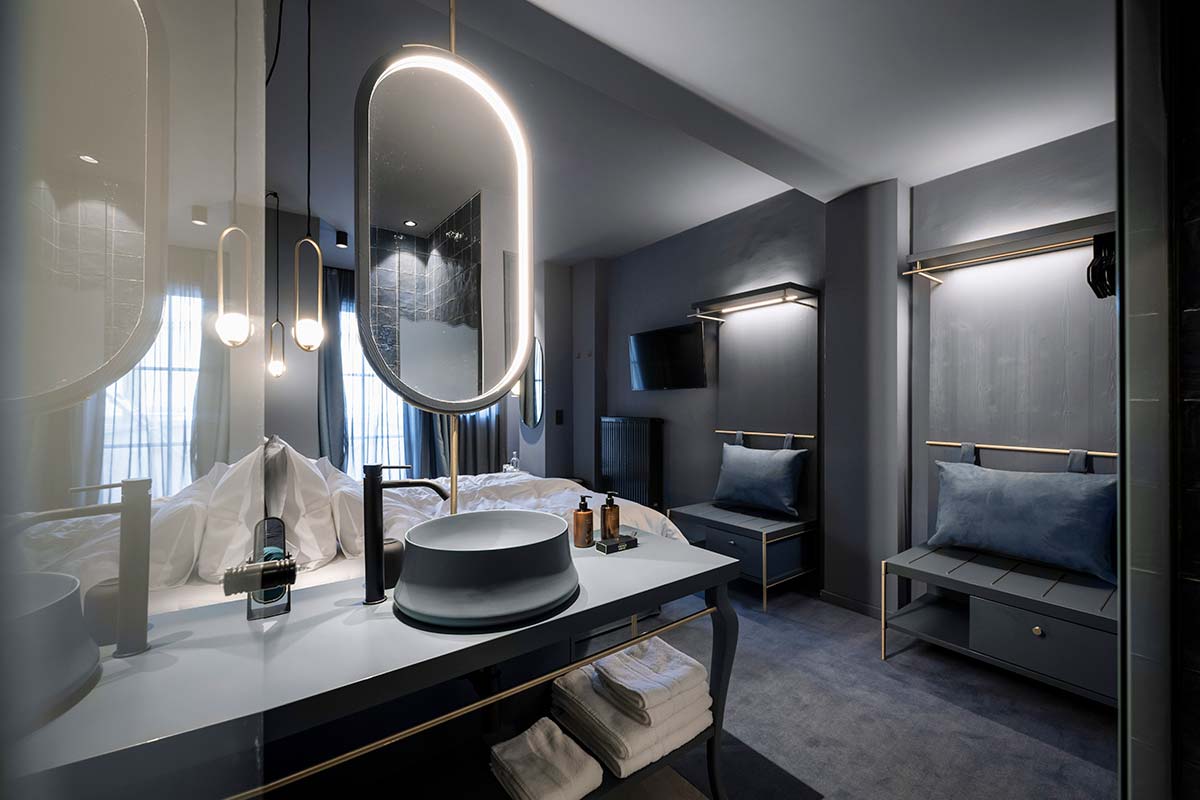
“Right from the start, we asked ourselves how we could revive a past that no longer exists. Barry Kosky’s art gave us the inspiration we needed on how to recreate a distant world. Kosky uses projections to stage a living musical theater; likewise, we as architects and interior designers have used the means in our possession, through colors, lights, mirrors, paths, to create surreal spaces.”

